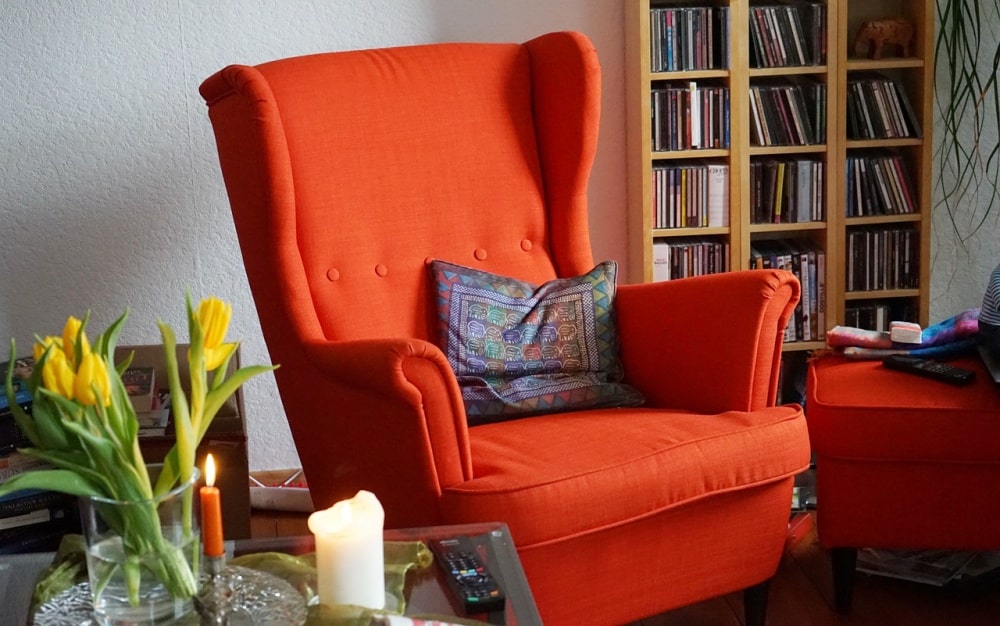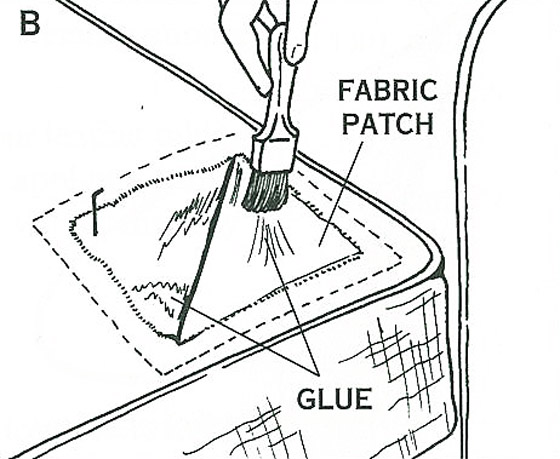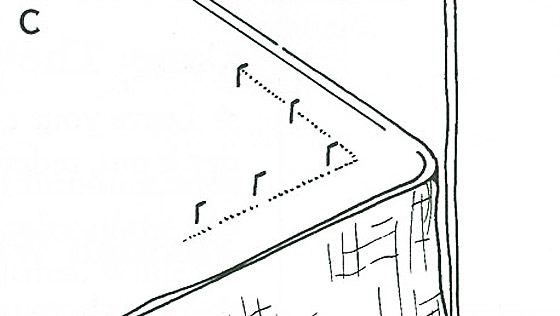How to Repair Torn Upholstery
Sofa upholstery repair troubles got you down? Use this simple DIY method to repair torn upholstery yourself and extend the life of your furniture.

Coffee By Design | Portland, Maine
Photo Credit : Katherine KeenanSending an upholstered couch or chair to be recovered when the fabric gets torn can sometimes cost as much as buying a new piece of furniture. Fortunately, many upholstery tears occur along the weave of the fabric, creating a triangular flap that can be easily repaired. You can save money and extend the life of your piece of furniture by patching the tear with glue and another piece of heavy fabric (such as canvas, denim or muslin). Read on to learn how to repair torn upholstery yourself.
MATERIALS TO REPAIR TORN UPHOLSTERY
- Piece of heavy-duty fabric such as canvas
- Spoon
- Poultry skewer or upholstery pin
- Latex fabric glue
HOW TO REPAIR TORN UPHOLSTERY

First, cut a piece of heavy fabric slightly larger than the the piece that is torn. Peel back the torn flap of upholstery and slide the upholstery patch beneath it with the handle of a spoon, using the spoon to adjust the position of the patch.

Then pin back the upholstery flap with a poultry skewer or an upholstery pin. Brush a thin layer of latex fabric glue over the surface of the patch and along the edges of the torn upholstery.

Carefully replace the torn flap on top of the upholstery patch, adjusting the fit and patting it gently to avoid squeezing glue out the sides of the repaired area. Use more poultry skewers or upholstery pins to pin the torn flap against the patch until the glue has dried and set properly, then remove them for a perfect repair.
TIPS TO KEEP FURNITURE UPHOLSTERY FROM TEARING
Use a whisk broom to remove the dust that collects on top of the back and arms of upholstered furniture. This keeps the fabric looking fresh. A vacuum cleaner, even if it has special upholstery attachments, tends to pull threads.
If you find children’s clay modeling compound stuck to your couch or overstuffed chair, remove the excess and let the rest dry. Use a stiff brush to loosen any residue, then whisk it away with a whisk broom. If necessary, use mild soap and water to clean any remaining spots.
When your upholstered couch or chair needs more cleaning than soap or a whisk broom can handle, send it out to a reputable professional. (Look in the Yellow Pages under Cleaners-Upholstery.) A professional will use the right chemical cleaners, and you won’t be stuck guessing whether the solution you’re about to rub into that stain will leave a hole in the fabric.
When moving or storing a piece of upholstered furniture, avoid placing it against other items with sharp corners or edges (such as a mirror or small table), which could puncture or tear the fabric. Instead, rearrange the moving van or storage room, or wrap the sharp item in several layers of blanket before packing it near the upholstery.
Do you have any sofa upholstery repair tips? Let us know!
LEARN MORE:
Get Rid of Musty Odors with Cat Litter, Newspapers & Charcoal
Remove Candle Wax from Fabric
Homemade Silver Cleaner | Polish Silverware without Harsh Chemicals
Get Scratches Out of Wood Furniture
This post was first published in 2012 and has been updated.








The passenger seat in my car tore about a month ago and it has been bugging me every time I get in my car. Thank you for giving these instructions and all of the pictures. My last upholstery job turned out really bad but now I feel more comfortable with tackling this new project.
where do i buy fabric glue?
thank you for such good instructions
Have you seen this product? “fixmytear”. It’s a repair tape which sticks very well to vinyl, canvas, rubber, leather and most other surfaces. Apply it to both sides if you can for extra strength. Absolutely life saving tape.
Thanks for informing me that I should avoid placing recently upholstered furniture with items with sharp edges or corners because it might damage the fabric. My mom and I are taking some of the old furniture in our ancestral home to a furniture upholstery service downtown because they’re already worn out. I’ll try to find a service that offer free delivery so we wouldn’t have to worry about the transportation ourselves.